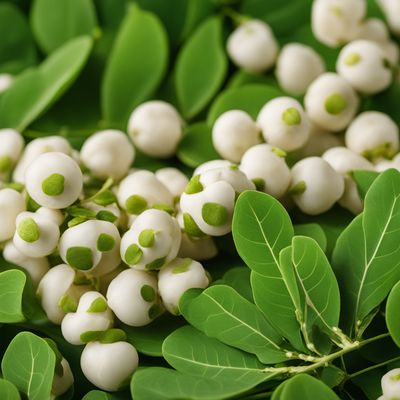
Ingredient
Pigeon peas (without pods)
The Protein Powerhouse: Pigeon Peas
Pigeon peas are small, oval-shaped legumes with a beige or light brown color. They have a nutty and earthy flavor with a creamy texture when cooked. Pigeon peas are commonly used in Indian, Caribbean, and African cuisines. They are often cooked with spices, vegetables, and meats to create flavorful dishes like dal, rice and peas, and sambar. Pigeon peas are also a good source of plant-based protein and dietary fiber.
Origins and history
Pigeon peas have a long history and are believed to have originated in Eastern Africa. They have been cultivated for thousands of years and are an important staple crop in many tropical and subtropical regions. Pigeon peas were introduced to India around 3,500 years ago and have since become a key ingredient in Indian cuisine. They were later brought to the Caribbean and other parts of the world through trade and colonization.
Nutritional information
Pigeon peas are a good source of plant-based protein, dietary fiber, and various vitamins and minerals. They are low in fat and cholesterol-free. Pigeon peas are also rich in antioxidants, which help protect the body against oxidative stress and inflammation.
Allergens
There are no known allergens associated with pigeon peas.
How to select
When selecting pigeon peas, look for dried peas that are whole, uniform in size, and free from any signs of mold or insect damage. Avoid peas that are discolored or have a musty odor. If purchasing canned pigeon peas, check the expiration date and ensure the cans are not dented or damaged.
Storage recommendations
To store dried pigeon peas, place them in an airtight container or resealable bag and store in a cool, dry place. They can be kept for up to a year. Cooked pigeon peas should be stored in the refrigerator in an airtight container for up to 3-4 days. Canned pigeon peas should be stored in a cool, dry place and consumed before the expiration date.
How to produce
Pigeon peas can be grown in tropical and subtropical regions with warm climates. They require well-drained soil and full sun. The plants should be watered regularly, especially during dry periods. Pigeon peas can be grown from seeds or seedlings and take approximately 3-4 months to mature.
Preparation tips
Pigeon peas can be cooked in various ways, including boiling, pressure cooking, or slow cooking. They can be used in soups, stews, curries, and rice dishes. Pigeon peas can also be ground into flour and used in baking or as a thickening agent. Additionally, they can be sprouted and used in salads or as a garnish.
Culinary uses
Pigeon peas are widely used in Indian, Caribbean, and African cuisines. They are a key ingredient in dishes like dal, rice and peas, sambar, and arroz con gandules. Pigeon peas can also be used to make fritters, patties, and spreads. They pair well with spices, coconut milk, and various vegetables and meats.
Availability
Pigeon peas are commonly available and cultivated in India, the Caribbean, Africa, and other tropical and subtropical regions. They can be found in grocery stores, specialty markets, and online retailers.


